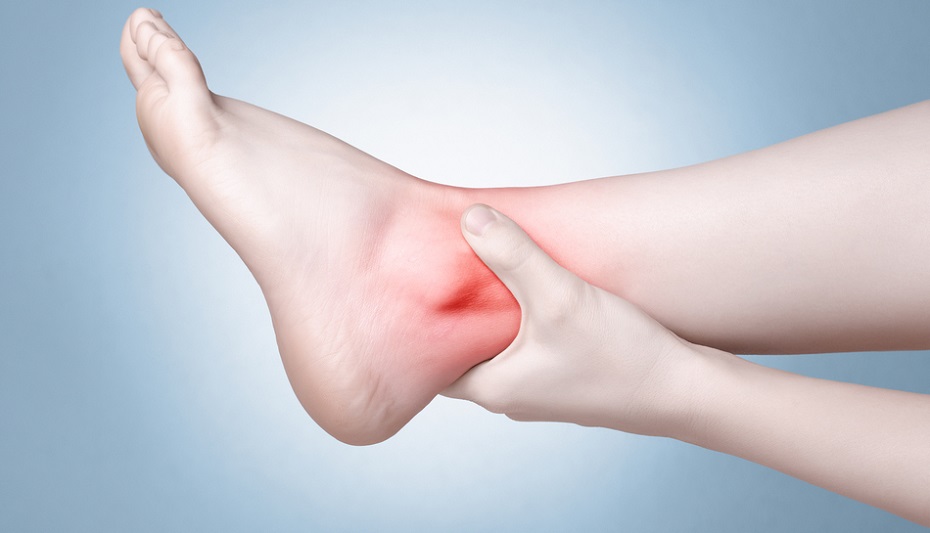

The Achilles tendon is the largest and strongest tendon in the human body. It forms the connection between the heel bone and the calf muscles, providing stability and function to the lower leg and foot. A healthy Achilles tendon enables a person to perform activities such walking, running, standing on their toes and climbing elevations, such as climbing stairs. An early symptom of Achilles tendinitis can be favouring of the affected foot and mild discomfort in the back of the top of the heel.
Achilles tendinitis is the term used to refer to the inflammation of this tendon that usually follows excessive use. While some research suggests that women may be more commonly affected by Achilles tendinitis than men, more research needs to be performed to confirm this finding.
Symptoms of Achilles Tendinitis
Symptoms of Achilles tendinitis are typically pain, swelling and stiffness in the back of the heel and ankle region. Reduced ankle joint range of motion and limping can also occur as a result. People who suffer from Achilles tendinitis may have difficulty carrying on with normal daily activities due to excessive pain while walking.
Causes of Achilles Tendinitis
Achilles tendinitis is most often the result of excessive mechanical stress on the Achilles tendon. The Achilles tendon can be acutely injured, for example, in a person who suddenly increases the amount they run by a large amount. This rapid increase of demand on the Achilles tendon coupled with deconditioned calf muscles can lead to injury of the Achilles tendon. Chronic low-grade injury to the Achilles tendon can occur due to improper running form or walking with improper footwear. This chronic damage to the Achilles tendon can lead to thickening over time and increased risk of developing Achilles tendinitis.
Risk Factors
- Prolonged time spent on high intensity sports and activities
- Type of footwear used and changes in footwear
- Other health problems such as high blood pressure and diabetes
- Use of corticosteroids
- Use of fluoroquinolones group of antibiotics
- Family history of the condition
- Improper walking or running posture and movement
Diagnosis
Diagnosis of Achilles tendinitis is made with a detailed history of the presenting problem and a physical exam of the affected area. Imaging, such as an X-ray or MRI may be used to confirm the diagnosis or rule out other possible causes of the symptoms.
Alternative Treatment of Achilles Tendinitis
Acupuncture is an ancient treatment which has been used to treat a wide variety of health conditions using the principles of Traditional Chinese Medicine. Acupuncture is an excellent natural treatment for pain of many different causes. Acupuncture manages many cases of Achilles tendinitis very well by bringing blood flow to the affected region and jump-starting the healing response.
Neural prolotherapy is a treatment which uses a shallow (subcutaneous) injection of a 5% dextrose (sugar) solution under the skin. This treatment focuses on relieving pressure on an impinged nerve by creating a hydrodissection (water pillow) in the area surrounding the nerve. The dextrose solution also down-regulates the TRPV1 receptors (pain receptors) on the surface of the nerve. Neural prolotherapy was first discovered by Dr. John Lyftogt, a medical doctor from New Zealand. Dr. Lyftogt successfully used this treatment on himself to recover from his own chronic case of Achilles tendinitis. Following his recovery Dr. Lyftogt has traveled the world teaching this treatment to other doctors. Read more on neural prolotherapy.
Conventional Treatment of Achilles Tendinitis
Conventional treatment of Achilles tendinitis may include
- Acutely rest, compression and elevation is effective for uncomplicated cases
- Improving footwear
- A strengthening protocol for the muscles of the lower leg and ankle.
- Corticosteroids. Although corticosteroids increase risk of tendinitis, they may be injected for reducing the inflammation and swelling of the tendon in the short-term.
- Surgery is a last resort for treatment of Achilles tendinitis. Surgery can provide relief for people who have undergone more conservative treatment without getting results, however, complications occasionally occur with surgery including rupture of the Achilles tendon.